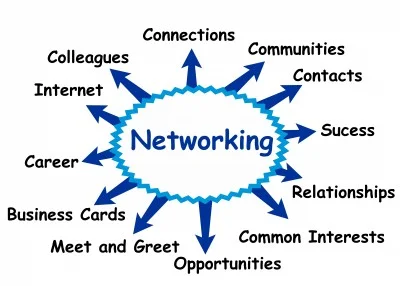What is Networking?
A network is a group of linked systems (people could be considered systems) that work or operate interactively, sharing information, resources and/or abilities to accomplish a given task or set of tasks. So, networking is an active process - it requires effort. But it doesn’t have to be difficult or complicated. In fact, the most successful networks are ones that just seem to work on their own.
How Do I Find a Network?
Despite popular opinion and a host of social networking sites, networks are neither found nor joined. They are grown or built from scratch. The good news is, if you don’t have a functioning network now, you shouldn’t worry. Most people think they have a network, and they actually don’t.
How Long Does It Take to Grow a Network from Scratch?
Hopefully, you will be growing your network for as long as you stay active in your field, career, or life. Networks need to be nourished and cultivated to work for you. But that isn’t as hard as it sounds.
Where Do I Start?
Anywhere and everywhere. It may sound silly, but you can make connections that turn out to be strong advocates for your cause at the supermarket or your daughter’s swim meet. The key is to recognize the situation as a networking connection, and then apply a few simple tips to start turning that event into more than a casual encounter.
Essential Tips to Growing Your Network
Engage in a Real Conversation
Before you even introduce yourself, have a reason for talking with the person. This is actually the hardest step for anyone to get right. Use your own instincts here. You know how you feel when a salesperson approaches you in a store or at a car dealership. Don’t be that guy. In fact, some of the most successful engagements are those that begin with the other person asking you a question or offering to help you. Yes, that means even that sales person could be a good contact.
Share a Story
Learn to tell your story. It is a skill worth developing. People have trouble remembering names, dates, places and where they left their car keys. Don’t expect them to remember you without help. Stories help - a lot! They shouldn’t be long and they should be on point, meaning they should have something to do with the conversation or situation you are in at the time.
Get the Person’s Contact Information
You’d be surprised how many people miss this one. We are all so focused on giving out our business cards, we sometimes forget to make a note of the person to whom we gave it. In this instance, it is more important to get than to receive. You can follow up with someone if you can call them, write them or visit them. And if possible, you should do all three.
Get Them to Tell You Something About Themselves
Don’t rely on the situation to help you. It isn’t enough to say that you met at such-and-such event. Even if you are the only person they met there, so what? It definitely helps to say when and where you met, but you should also have something else to refer to, something that is personal to them.
Write It Down!
Create a contact in your smart phone, take their picture, add a location using GPS, get as much information as you can and then add a special note to remind you about the conversation you had. Even if all you talked about was the weather, make a note of it so you can follow up. “Did you get home safely in all that snow?”
Reengage With a Purpose
When you contact them again, and you must, do it for a reason. Which of the following do you prefer? You just met someone at a networking event and you get a standard request to connect on LinkedIn. Or, you get a personal message in the LinkedIn request, along with a link to an article on the topic you had discussed when you met.
Be An Advocate With a Voice and a Memory
Remember, networks work when they are nurtured and fed. You should never pressure someone to help you. Instead, find opportunities to get together and share what is happening yin your world, while listening and learning about theirs. Many new sprouts can come from one healthy plant.


